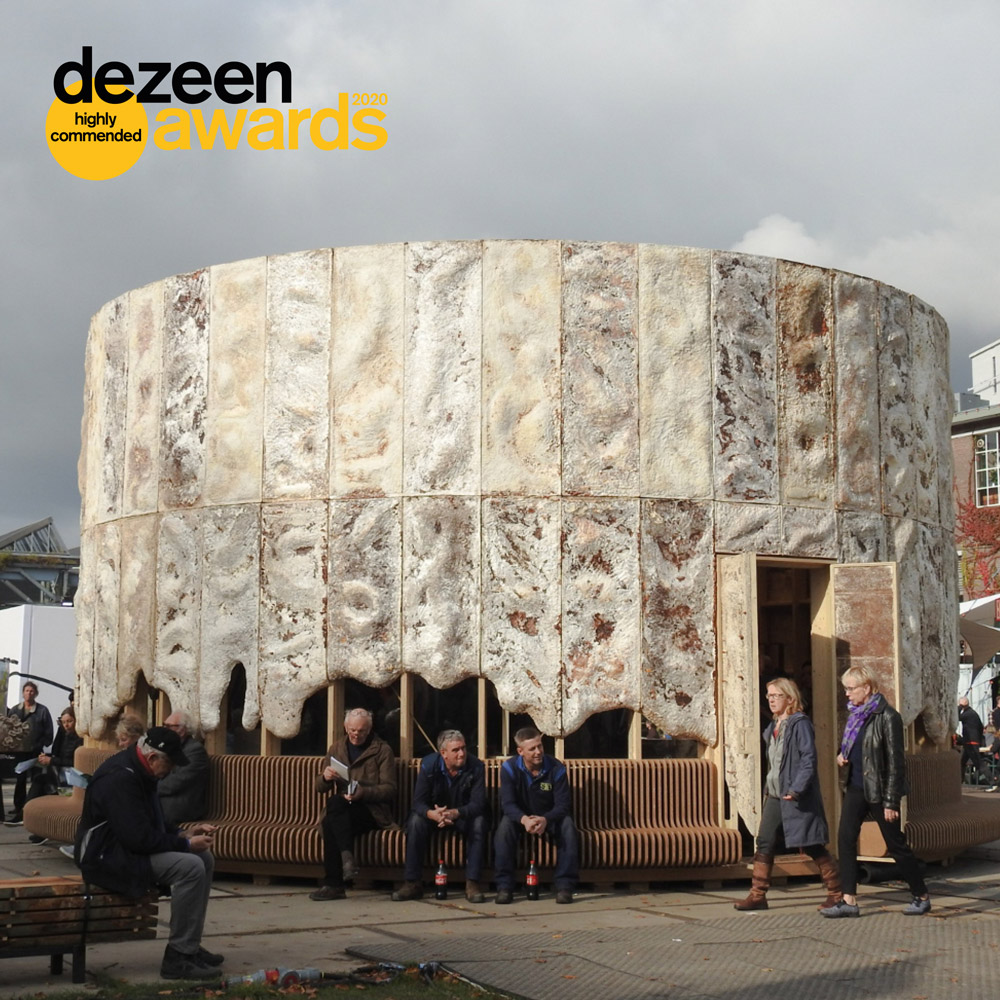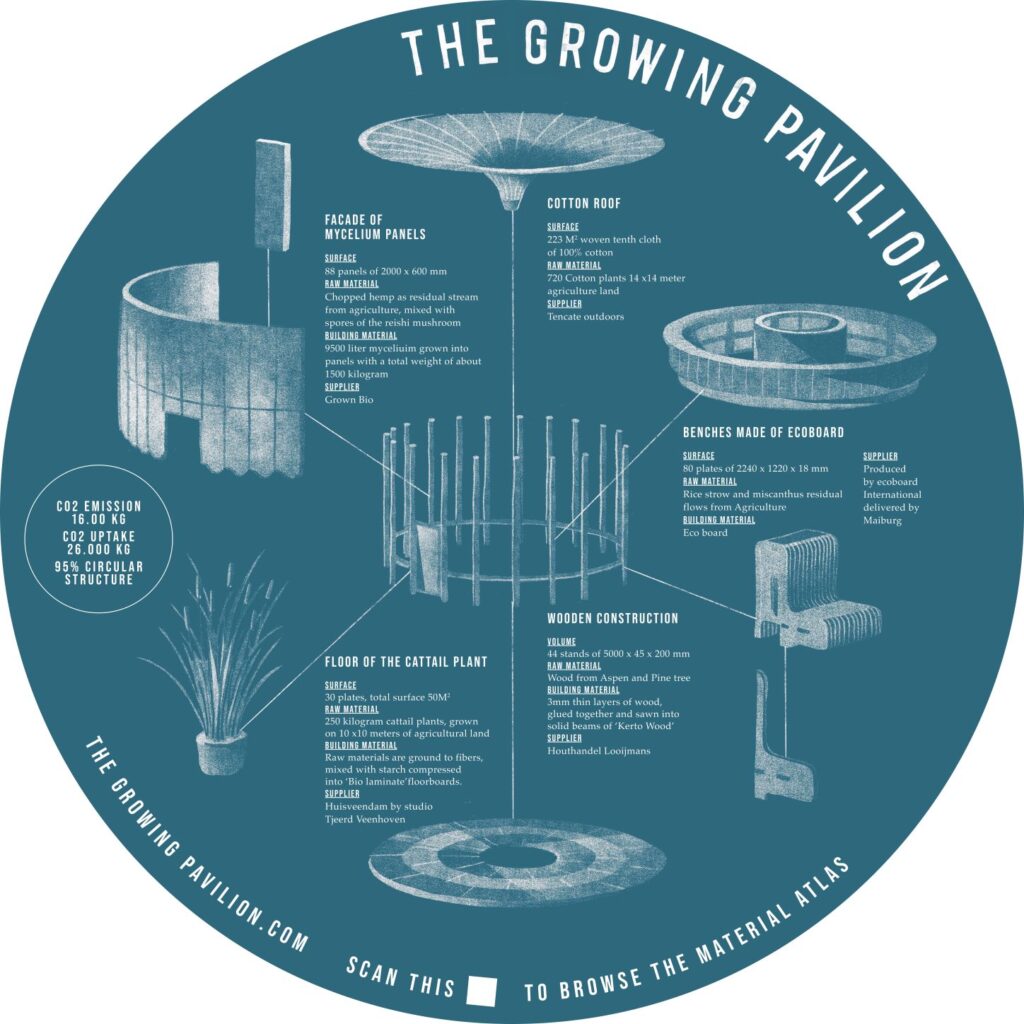
Mycelium May be the Preferred Sustainable Building Material of the Future
Mycelium, the vegetative part of a fungus, is akin to a network of roots for mushrooms, usually hidden beneath the soil. This intricate network not only anchors the mushroom but also plays a crucial role in carbon sequestration, interacting with trees and plants to exchange nutrients and carbon dioxide. Recognizing its remarkable properties, scientists are now harnessing mycelium’s potential to provide sustainable alternatives to traditional building materials.These materials are not only very beautiful, they absorb so much CO2 that buildings including transport and production could become CO2 NEGATIVE.
The skin of the The Growing Pavilion consists of 88 mycelium panels. Mycelium are the roots of the mushroom that make beautiful networks underground. When you mix shredded hemp, or flax, or any other crop with strong natural fibers otherwise often burned as waste with a little mushroom you will get these beautiful, sturdy, very light, fire-retardant, water-repellent, acoustic top sheets in just a few weeks. You can use them indoors, or as insulation between your walls. Accordign to the designers of the living pavilion you can also, with the right natural coating, create exterior facade panels. The mushroom no longer grows, it has stopped due to drying and can therefore no longer release spores. The materials used are not only very beautiful, they absorb so much CO2 that The Growing Pavilion, including transport and production, sequestered 10 tons of CO2 making it a carbon NEGATIVE solution bringing us a little closer to our global zero emissions goal.
Mycelium's rapid and robust growth makes it an ideal candidate for eco-friendly production, spawning materials for packaging, textiles, structural bricks, insulation, and beyond. While some mycelium-based products have entered the market, the industry is still in its infancy, with ongoing research aimed at enhancing the material's strength and production processes.Through baking or similar processes, the mycelium is shaped and solidified, halting further growth to create stable, usable products. With artists and designers pioneering new applications and commercial ventures already integrating mycelium into their product lines, we stand on the cusp of a mycological revolution in industries ranging from construction to fashion. Keep a watchful eye, as the coming years promise an upsurge in mushroom-derived materials across various sectors.Mycelium's minimal environmental impact underpins the impetus for its adoption: it can be locally cultivated using organic by-products, without competing with agriculture for soil, thereby transforming waste into valuable materials.
The convergence of art, design, and science has been pivotal in mycelium material development. Notably, The Growing Pavilion, an award-winning project at 2021 S+T+ARTS Prize, exemplifies the innovative applications of mycelium and its potential to stimulate commercial product development. After a striking introduction at Dutch Design Week, the pavilion was rebuilt at Floriade Expo 2022. Here, together with a number of other pavilions from the Netherlands and other countries, it forms an example of ‘Growing Green Cities’, solutions that are needed to make cities greener, healthier and to make it more fun. The Growing Pavilion was part of Mycelium Parc.